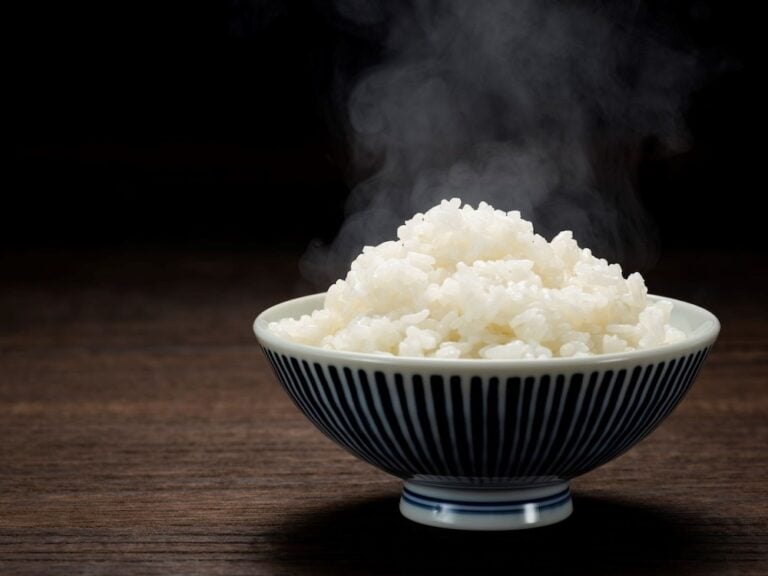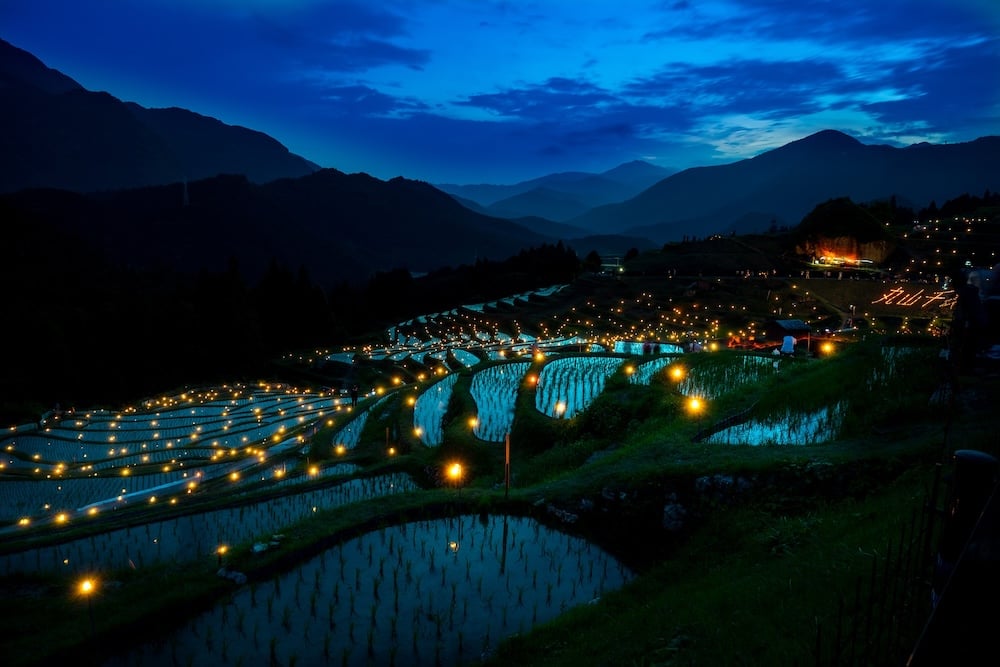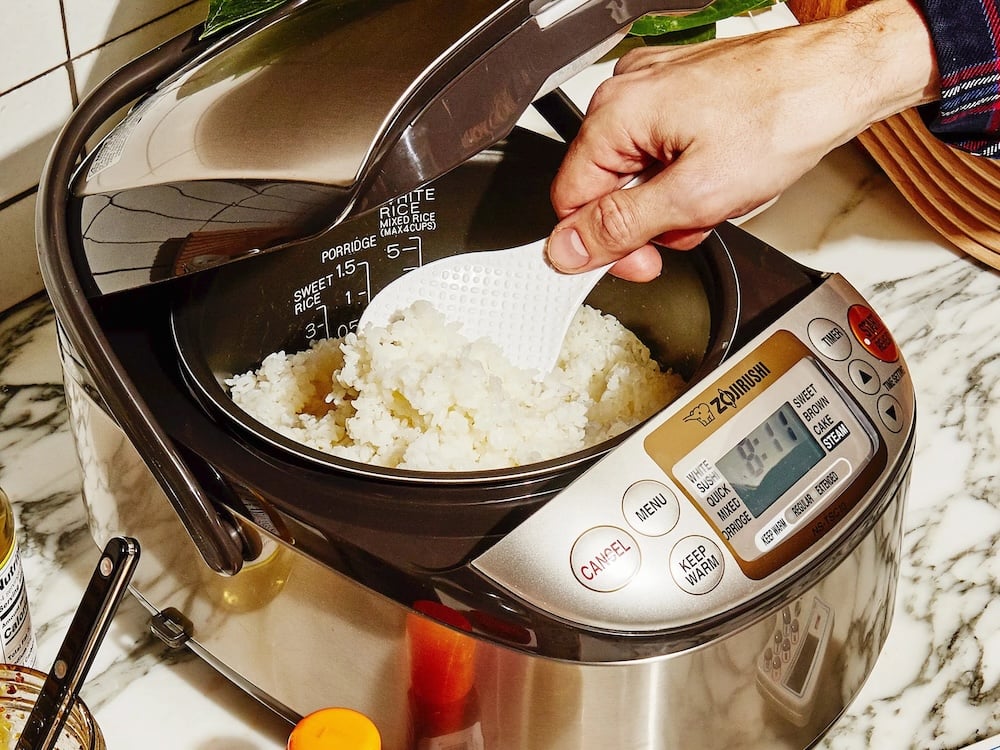
If you come from a Western country, it’s more than likely going to blow your mind that so much food in Japan is made with rice. Everything from booze to sweets are made using the stuff, so it’s going to benefit you to know a little bit more about the white grains that fuel Japan. It’s such a staple of life here, that food is often translated to ご飯 despite it directly meaning rice.
Famous Producers
Japan is renowned for its high-quality rice, and several regions across the country are famous for their rice production, each with its unique characteristics. Niigata, located along the coast of the Sea of Japan, is celebrated for its 魚沼産こしひかり rice, known for its deliciously sweet and slightly sticky texture. The region’s heavy snowfall during the winter contributes to the rice’s exceptional quality.
In the Hyogo Prefecture, Hyogo Akamai rice thrives due to the ideal climate and fertile soil, offering a perfect balance of tenderness and stickiness, making it a favoured choice for sushi.

Akita Prefecture is home to 秋田産こまち Akita Komachi, a fragrant and slightly sweet rice variety. The region’s harsh winters and abundant snowfall play a role in producing rice that’s highly sought after for its unique taste and aroma.
These famous rice production areas are a testament to the diverse flavours and textures that Japanese rice offers, making it an integral part of the nation’s culinary heritage.
Time of Year
Rice planting and harvesting in Japan follow a well-defined seasonal cycle that significantly impacts the availability and pricing of rice for consumers. Rice planting typically begins in the spring, around April, as temperatures rise, and fields are prepared for the new crop. This process continues into May, with the growth and care of rice plants throughout the summer months. Harvesting, on the other hand, typically occurs in the fall, around September and October.
What to Look for in the Supermarket
For most foreigners living in Japan, the rice isle at the supermarket is a baffling place. Whilst many people just accept, they don’t know what they’re doing and opt for the best cost-performance, you might be able to use the table below to better identify the rice you actually want to eat.
| Aspect | Japanese | Description |
|---|---|---|
| Rice Variety | 種類 | Choose the rice variety that suits your culinary preferences. |
| Place of Origin | 産地 | Incidates where the rice was produced. |
| Milling Rate | 精米歩合 | Indicates the percentage of the rice grain remaining after milling. Higher milling rates result in cleaner, shinier grains. |
| Harvested Date | 収穫日 | Check for label indicating 新米 for newly harvested rice, typically available in the autumn. |
| Organic | 有機 | Seek packages labeled as 有機 if you prefer organic rice. |
| Net Weight | 内容量 | Ensure you check the net weight to get the desired quantity. |
| Brand | ブランド | Well-known brands often maintain consistent quality, making them a safe choice. |
| Aroma | 香り | Some rice packages may highlight the aroma of the rice, which can be a unique selling point. |
| Cooking Instructions | 調理法 | Check for any specific cooking instructions or recommendations on the package. |
I always try to stock up on rice while it’s cheapest around the times of harvesting. I can get 10kg of rice for around 1200 yen from the business supermarket 業務 スーパー near my house. That’s a staggeringly good deal!
Rice Cookers

Rice cookers are an essential item in any Japanese kitchen. Think of them as an oven in the west. I’ve even had coworkers tell me they took rice cookers in their suitcase when going abroad because they couldn’t imagine eating without one. These nifty bits of kit range from the most basic without much extra functionality, to beasts that can be set to timers and to make specific rice dishes. You can even use a rice cooker to cook things like roast beef!
I recommend heading to Hard Off if you’re looking for a decent second-hand rice cooker. A 3-5 cup rice cooker should suffice if you’re living alone. Some things you might want to look for in a rice cooker include:
- Removable pot for easy cleaning.
- Non-stick coating on the pot for ease.
- Timer and delayed start – these can be so convenient for having rice in the mornings.
- Warming function – to keep your rice warm without drying it out over a long period.
Some Dishes You Might Not Know About
Whilst there are some rice dishes from Japan that are incredibly famous, why not try one of these slightly less known ones:
- 納豆ご飯 – This dish is beautifully simple and a breakfast staple for many Japanese families. Just cook up some rice and mix in some natto and soy sauce. Really mix it if you want that ねばねば sticky consistency that many people love here.
- 炊き込みご飯 – This is rice mixed with seasonal vegetables and meat, and then seasoned with soy sauce, and dashi. It’s devilishly simple to make in a rice cooker. It’s such a popular dish that many rice cookers even come with a setting specifically to make it.
- 茶漬け – This is a great dish to use up leftover rice. Simply pour green tea over your rice and add ingredients like ふりかけ (dried food sprinkled over rice) or fish. This is such a comforting food in winter and one I have come to adore.
Rice is such an integral part of Japan that it would be such a shame if you came to live here and never truly understood the stuff. With this guide, you should be a bit more knowledgeable and able to find your preferred rice amongst the masses.















